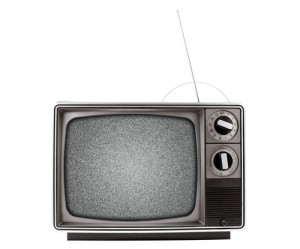Why Traditional Media Needs Text Messaging
 You’re listening to the radio while you’re getting ready for work when an ad comes on talking about an upcoming concert.
You’re listening to the radio while you’re getting ready for work when an ad comes on talking about an upcoming concert.
You’re sitting on your couch watching TV when a commercial tells you about a new product that sounds interesting.
You’re waiting for your dentist when you see an ad in a magazine for something that would make a great gift this holiday season.
You’re standing at a bus stop downtown when you see a billboard about a non-profit who is trying to make a difference close to your heart.
What’s happening here? First, you’re being exposed to traditional media, channels that some say are “dying”. Second, you’re most likely doing this with a phone in your pocket, purse, or very close-by.
Considering all the interest in digital media these days it’s easy to forget we’re all still consuming a lot of traditional media: TV, radio, print, and outdoor. These channels still have the ability to capture a lot of attention and create significant interest. However, traditional media suffers from two big problems.
1. Traditional media makes it difficult for your audience to take action immediately
Sure you can always ask them to “call now” or “visit our website”, but realistically how likely are they to do that? Looking at the scenarios above it’s easy to see how someone could forget, get distracted, or just not bother to follow up on their initial interest in the ad. At the end of the media campaign you may be left with only “brand awareness” to show as your return on investment.
2. Traditional media can be difficult to measure
Because it’s hard for your audience to take action (they can’t just click on something) it’s not easy for you to figure out which media is working and which isn’t. You’ll be left with vague answers to questions like “How did you hear about us?” Knowing exactly what type of media is creating an action would be very valuable for future campaigns and ad buys.
How can text message marketing solve these problems?
1. Text messaging is an easy call-to-action
By giving your audience a reason to pick up their phone and send a simple text message you have allowed them to express their interest in your organization in the easiest way possible. If their phone isn’t in their pocket when they see your ad, it’s most likely still the closest piece of Internet-connected technology in the room. Have them enter to win something, get a coupon for their first visit, or request more detailed information through a text message. When they send the message the software you use to run your campaign will record their phone number. This allows you to continually grow a database of prospects with each media buy. Of course, just like with email marketing always be sure to get permission before including subscribers in a mass messaging campaign. Sure they could also use their phone to call or visit your website (if the phone is web capable), but neither of those is as fast and easy as sending a text message.
2. Text message marketing allows you to use different keywords to track ad buys
Any time you run a text message marketing campaign you choose a keyword that will serve as the unique identifier. Using one keyword for TV and another for radio will show you which one is getting more activity. For example, your TV ad could say “Text WIN to 12345 for your chance to win a beach vacation” while your radio ad would read “Text BEACH to 12345 for your chance to win…” Inside your reports you’ll be able to see how many people texted-in through TV versus radio.
Common questions:
What is the audience texting in for when they see the ad?
I always advise people to try and do the same thing through text messaging that they were going to do through phone or web. Do you want them to enter for a chance to win something? Maybe receive a coupon they can use for their first purchase? What about a request for more information that can be sent to them via email? All of these interactions can be conducted through text messaging.
But what about QR codes, can’t they be used in traditional media to do the same thing?
While QR codes might work for print and outdoor ads, they’re certainly not going to work for TV or radio. Also, when someone scans a QR code you haven’t yet collected any information about them. You would need to have them fill out a web form to build your database, an extra step. When someone sends a text message the system you’re using to run the campaign will instantly store their phone number.
And remember, while QR codes may seem “so cool” to us marketers most people outside the marketing world do not understand how to use them yet. If you want to include a QR code in your print ads to capture the hip techie crowd be sure to also include a text message option for those without smartphones or QR readers installed. For a more a detailed comparison of text messaging and QR codes check out “Head-to-Head: SMS vs QR Codes”.
What do you think? We’d love to hear about your experiences with text message marketing and traditional media. Please leave a comment below. Thanks!
This post was originally featured on Social Fresh, a site dedicated to social media and marketing education for business.

No comments yet.